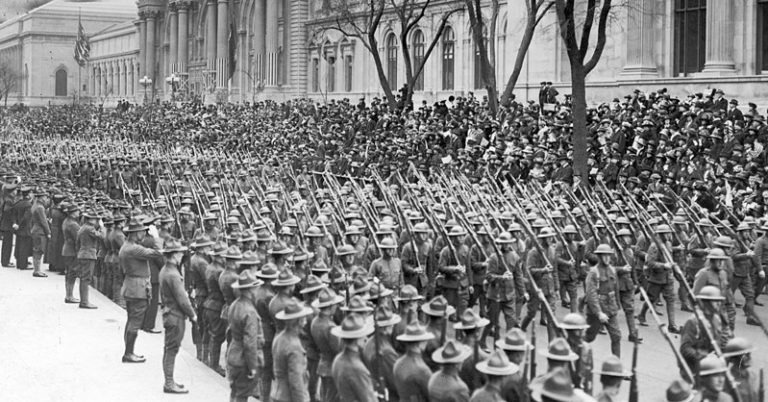Do You Know How World War I Changed the World Forever
Blog post description.
KNOWLEDGE & EDUCATION
7/26/20253 min read


World War I, also known as The Great War, was one of the deadliest conflicts in human history, lasting from 1914 to 1918. It involved over 70 million military personnel, including 60 million Europeans, and led to over 16 million deaths. But do you know what sparked this massive war, how it unfolded, and why its consequences still affect our world today?
1. The Spark That Ignited the World
The immediate trigger for World War I was the assassination of Archduke Franz Ferdinand of Austria-Hungary on June 28, 1914, in Sarajevo by Gavrilo Princip, a Serbian nationalist. This event set off a chain reaction among European powers, who were already tangled in a web of alliances, rivalries, and arms races.
2. Major Causes of World War I
Militarism: The belief in building strong armed forces and being prepared for war.
Alliances: Secret defense pacts between countries like Germany and Austria-Hungary or Britain, France, and Russia.
Imperialism: Competition for colonies, especially in Africa and Asia.
Nationalism: Fierce pride in one's nation or ethnic group, leading to conflicts.
The Balkan Crisis: A volatile region with rising tensions and nationalistic uprisings.
3. The Central Powers vs. The Allied Powers
Central Powers:
Germany
Austria-Hungary
Ottoman Empire (Turkey)
Bulgaria
Allied Powers:
France
Britain
Russia (until 1917)
Italy (joined in 1915)
United States (joined in 1917)
Japan and other smaller allies
4. The Western and Eastern Fronts
The Western Front in France and Belgium became known for trench warfare, where soldiers faced horrific conditions.
The Eastern Front was more fluid but equally brutal, especially between Germany and Russia.
Battles like the Battle of the Somme and Verdun caused millions of casualties.
5. Life in the Trenches
Soldiers lived in muddy, rat-infested trenches, enduring cold, hunger, disease, and constant shelling. The term "No Man's Land" referred to the deadly area between opposing trenches. The war introduced horrifying new weapons:
Machine guns
Poison gas (chlorine and mustard gas)
Tanks
Flamethrowers
Submarines (U-boats)
Aerial combat using planes and zeppelins
6. The Role of Colonial Soldiers and Women
Millions of soldiers from colonies like India, Africa, and the Caribbean fought for European powers.
Women stepped into roles in factories, farms, and even medical units, marking the beginning of major social shifts.
7. The Russian Revolution and Exit from the War
In 1917, Russia experienced the Bolshevik Revolution, leading to Lenin taking power. Russia withdrew from the war by signing the Treaty of Brest-Litovsk with Germany in 1918, which changed the balance of power temporarily.
8. U.S. Entry and the Turning Point
The United States entered the war in 1917 after:
Germany resumed unrestricted submarine warfare.
The Zimmermann Telegram, where Germany tried to persuade Mexico to join the war against the U.S.
The fresh American troops and resources helped tip the balance in favor of the Allies.
9. The End of the War
On November 11, 1918, an armistice was signed, ending fighting on the Western Front.
The war formally ended with the Treaty of Versailles in 1919, which:
Blamed Germany for the war.
Imposed harsh reparations and territorial losses.
Restricted Germany’s military.
10. Impact and Aftermath
Over 16 million people died, and another 20 million were wounded.
The map of Europe was redrawn; empires like the Ottoman, Austro-Hungarian, Russian, and German were dissolved.
The League of Nations was formed to prevent future wars (though it failed to prevent WWII).
Germany's humiliation and economic collapse sowed the seeds of World War II.
Millions were psychologically scarred, leading to what was then called "shell shock" (now PTSD).
11. Legacy and Remembrance
Remembrance Day (Armistice Day) is observed every November 11th in many countries.
Monuments, literature, and films continue to reflect on the human cost of the war.
The phrase "The war to end all wars" became tragically ironic with the outbreak of World War II just 21 years later.
Conclusion
World War I was more than just a conflict between empires — it was a world-changing event that brought unimaginable destruction, yet also led to innovation, global awareness, and major social changes. Its legacy reminds us that the thirst for power, unchecked alliances, and hate-fueled nationalism can destroy humanity. Understanding this history is key to preserving peace and learning from our past.
Knowledge
Empowering minds with reliable educational content daily.
Newsletter Signup
© 2025 DoYouKnow. All rights reserved.
Stay Ahead of the Trends – Join Our Newsletter
